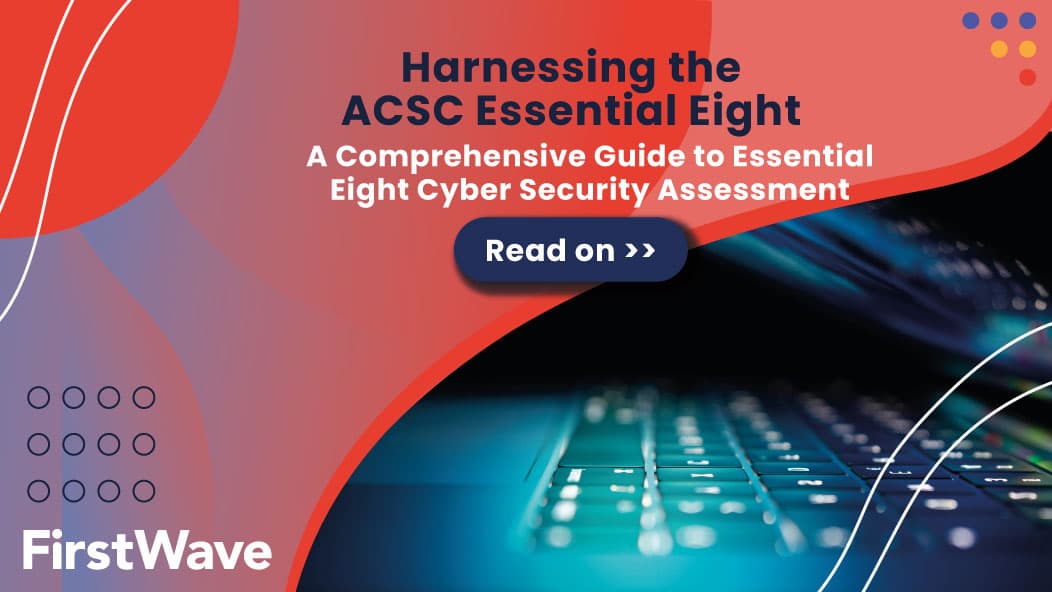28 September 2023
Harnessing the ACSC Essential Eight: A Comprehensive Guide to Essential Eight Security Assessment

In today’s evolving threat landscape, it’s crucial for organizations to prioritize their cyber security measures. The Australian Cyber Security Centre (ACSC) has developed a set of mitigation strategies known as the “Essential Eight” to assist organizations in bolstering their security posture. These strategies, often referred to as the “strategies to mitigate cybersecurity incidents,” are designed to make it much harder for adversaries to compromise systems and mitigate cybersecurity incidents.
Understanding the Essential Eight Cybersecurity Framework
The Essential Eight is a series of cybersecurity best practices recommended by the ACSC. These strategies are not just random recommendations; they are based on the ACSC’s extensive experience in responding to cyber threats and breaches. The Essential Eight controls are designed to help organizations mitigate cybersecurity incidents by addressing the most common and impactful cyber threats. The Australian Signals Directorate (ASD) and the Australian government have both emphasized the importance of these eight mitigation strategies.
Why Australian organizations Should Prioritize the Essential Eight
Across Australia, cyber threats are becoming increasingly sophisticated. From ransomware attacks to data breaches, Australian businesses are facing a myriad of challenges. Implementing the Essential Eight cybersecurity strategies can significantly reduce the risk of a successful cyber attack. The ACSC recommends that organizations implement these mitigation strategies as a baseline to protect their valuable assets. In fact, organizations are recommended to implement eight essential mitigation strategies to ensure a robust defense against cyber threats.
Diving Deeper: The Essential Eight Series
- Application Control: Effective application control ensures that only trusted applications run within an organization’s network. This control restricts the execution of potentially harmful applications, making it much harder for adversaries to introduce malicious software. Using Microsoft and other software securely is paramount.
- Patch Applications and Operating Systems: Regularly updating software and operating systems with security updates is crucial. Vulnerabilities in outdated software can be exploited by adversaries, leading to potential breaches.
- Configure Microsoft Office Settings: Microsoft Office, especially Microsoft 365, is widely used throughout Australia. Ensuring that its macro settings are securely configured can prevent malicious code execution.
- User Application Hardening: This involves securing web browsers and other user applications to prevent cyber threats. For instance, web browsers should be configured not to process Java from the internet or display web advertisements, which can be potential vectors for malware.
- Restrict Administrative Privileges: Limiting administrative access ensures that potential breaches don’t have widespread implications. This strategy involves validating requests for privileged access and ensuring that privileged accounts have specific limitations.
- Multi-factor Authentication: Implementing multi-factor authentication adds an additional layer of security, ensuring that even if passwords are compromised, the adversary can’t access the system without the second authentication factor.
- Regular Backups: Regularly backing up important data and configuration settings ensures that, in the event of a ransomware attack or data loss, organizations can restore their systems without significant downtime.
- Mitigation Strategies and Maturity Levels: The Essential Eight Maturity Model provides organizations with a roadmap to assess and improve their implementation of the Essential Eight. With four maturity levels defined, organizations can gauge their current security stance and work towards achieving a higher level of security maturity. These maturity levels have been defined based on mitigating increasing levels of adversary tradecraft.
The Essential Eight Journey for organizations
Every organization’s Essential Eight journey is unique. Starting with an Essential Eight assessment can help organizations identify their current maturity level and the steps needed to enhance their cybersecurity posture. The assessment process is crucial for understanding where an organization stands in terms of its security posture. The ACSC’s Essential Eight series provides a structured approach, guiding organizations from understanding the basics to achieving advanced levels of security implementation.
Understanding the Maturity Models of the Essential Eight
The Essential Eight framework is not just about implementing a set of strategies; it’s about understanding where your organization stands and where it needs to go. This is where the concept of maturity models comes into play. The maturity models associated with the Essential Eight provide a structured approach to assess and enhance a cybersecurity posture.
The Essence of Essential Eight Maturity
The ACSC Essential Eight maturity models are designed to assist organizations in gauging their current security stance and working towards achieving a higher level of security maturity. These models are not static; they are dynamic and evolve as the threat landscape changes and as organizations grow and adapt.
Tiers of Maturity: The Essential Eight Maturity Levels
There are four distinct Essential Eight maturity levels, each representing a progressively more robust implementation of the Essential Eight mitigation strategies. These levels help organizations prioritise their actions and understand the depth and breadth of implementation required:
- Level One: This is the basic level where an organization has started its Essential Eight journey. The security services and controls implemented at this stage provide a foundational level of protection.
- Level Two: At this level, the organization has made significant progress, implementing more advanced techniques and procedures to counter threats.
- Level Three: This is a more advanced stage where the organization has a comprehensive implementation of the Essential Eight security measures, designed to counter sophisticated threats.
- Level Four: The pinnacle of the Essential 8 maturity model, this level signifies that the organization has achieved a state-of-the-art security posture, capable of defending against the most advanced and persistent threats.
Navigating the Information Security Manual (ISM)
The ISM plays a pivotal role in guiding organizations on their Essential Eight journey. This manual, developed by the Australian government, provides detailed guidance on the number of controls, techniques, and procedures that organizations should implement to achieve a particular maturity level. The ISM is a valuable resource for any compliance manager or end user looking to understand and implement the Essential Eight effectively.
Achieving Your Target Maturity
Every organization should aim to achieve a maturity level that aligns with its risk appetite and the threat environment it operates in. While it might be tempting to aim for Level Four immediately, it’s essential to understand that each level is designed to assist organizations in building a robust security posture progressively. The goal is not just to reach a target maturity but to maintain it and adapt as the threat landscape evolves.

Conclusion: Navigating the Cyber Threat Landscape with the Essential Eight
In the face of an ever-changing cyber threat landscape, Australian organizations must remain vigilant. The Essential Eight offers a robust framework to help organizations mitigate cybersecurity incidents and protect their assets. By understanding and implementing these strategies, organizations can significantly improve their security posture, making it much harder for adversaries to compromise their systems.
Remember, cybersecurity is not a one-time task but an ongoing process. Regularly reviewing and updating your organization’s adherence to the Essential Eight can ensure you stay ahead of potential threats and maintain a strong security stance in the digital age.
Note: For more detailed guidance on the Essential Eight and other cybersecurity best practices, organizations can refer to the official resources provided by the Australian Cyber Security Centre at cyber.gov.au.
